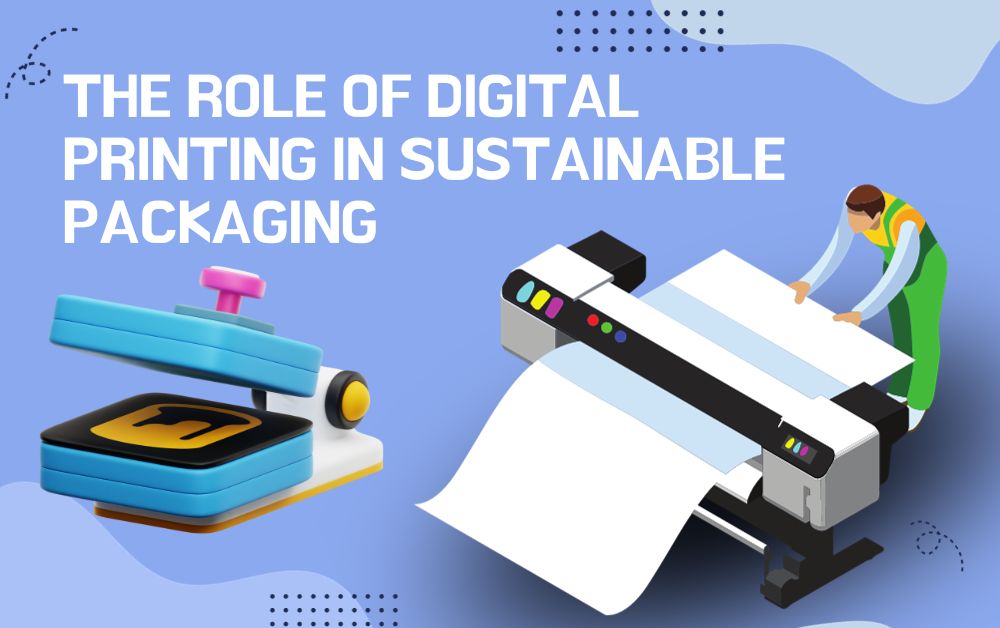When we think about sustainable or eco-friendly choices, we often think about things like recycling, using less plastic, or driving electric cars. But did you know that the way we print labels and designs on packaging can also be eco-friendly? This is where digital printing steps in. Let’s find out how digital printing is helping make packaging more sustainable.
Packaging plays a pivotal role in our daily lives, safeguarding products and presenting them in an enticing manner. However, the conventional packaging processes have often been resource-intensive and not very eco-friendly. Enter digital printing, a game-changer in the realm of sustainable packaging. Here’s a closer look at how it’s making a difference.
1. Using Less Ink
Traditional printing methods can waste a lot of ink. However, digital printing in Dubai is like a smart printer: it uses only what it needs. This means less ink goes into our environment and we save more natural resources. Traditional printing methods like offset or flexography often involve excess ink usage due to setup requirements and test runs. Digital printing, on the other hand, is precise. It deploys the exact amount of ink required for the design, eliminating the wastage. This reduction not only conserves resources but also reduces the environmental impact linked to ink production and disposal.
2. No Need for Plates
Before digital printing, factories used plates (like big stamps) for printing. These plates were often made of metals or other materials that are not so great for our Earth. But with digital printing, there’s no need for plates. It’s all done electronically, which is cleaner and causes less waste.
In older printing techniques, every new design needed a new plate. Manufacturing these plates consumes materials and energy. Plus, once the plate’s lifecycle ends, disposing of them presents another environmental challenge. Digital printing, with its plateless design, sidesteps these issues. The result? A notable reduction in material waste and energy consumption, fostering a cleaner printing process.
3. Print On-Demand
Back in the day, companies would print thousands of labels, even if they didn’t need them all, just to save some money. With digital printing, companies can print only when they need, and exactly how many they need. This means less waste, because there’s no excess to throw away. Overproduction is a significant concern in the packaging industry. Traditional printing methods encouraged bulk printing due to cost-efficiency, often resulting in surplus.
Digital printing’s flexibility facilitates on-demand printing, allowing companies to produce the exact number of labels or packages they require. This minimizes waste, ensures up-to-date information on packaging, and even aids in reducing storage space and associated costs.
4. Eco-Friendly Inks
One of the coolest things about modern digital printing is the use of green inks. These inks are made in ways that are kind to our planet. Some can even break down and return to nature faster than traditional inks, so they don’t stick around and pollute. It’s not just about how much ink is used, but also what’s in the ink.
Many traditional inks contain volatile organic compounds (VOCs) that can harm the environment. In contrast, many digital printing inks are water-based, with fewer harmful chemicals. They are designed to be gentle on the environment, ensuring that the printed packages don’t leave a lasting negative impact on our planet.
5. Less Energy Consumption
Digital printers are like the energy-saving bulbs of the printing world. They don’t need as much power to work, which means using less electricity. When we use less energy, it’s good for our planet because we reduce pollution from power plants. Every step towards energy conservation counts in our fight against climate change. Digital printers are modern marvels that prioritize energy efficiency. Their streamlined processes and reduced setup times mean they often consume considerably less energy than their traditional counterparts, making them a more sustainable choice.
6. Flexible Printing Choices
With digital printing, companies can easily change what they want to print without wasting materials. If a brand wants to change its logo or put a special message on their package, they can do it quickly and without throwing away old materials. In an ever-evolving market, brands often need to pivot their strategies or designs. Traditional printing can be a hurdle due to its rigid processes. Digital printing, with its adaptability, empowers brands to make last-minute design changes, run limited-edition prints, or even cater to region-specific packaging needs without the guilt of excess waste.
7. Recycling Made Easier
Digital printing makes it easier to recycle packaging. How? Because the eco-friendly inks and absence of harmful chemicals mean that the printed packages can be recycled without many problems. Sustainability doesn’t end once a package is printed; the afterlife of that package is equally crucial. Digital printing ensures the package’s recyclability isn’t compromised. With cleaner inks and fewer contaminants, digitally printed packages often have an easier journey through recycling facilities, ensuring they get a second life and don’t end up in landfills.
The beauty of digital printing lies in its ability to transform an industry that has, for decades, operated with practices that weren’t the most environmentally friendly. The packaging industry, once viewed with skepticism due to its heavy carbon footprint and waste, is now at the forefront of eco-friendly innovation. This revolution has been significantly bolstered by the rise of digital printing, which has opened doors to more sustainable methods without compromising on quality, appeal, or efficiency.
Conclusion
Packaging is everywhere. From the cereal box you open for breakfast to the online shopping parcel you receive. And if we can make this packaging in a way that’s kinder to our planet, why not? Thanks to flyers printing, we’re taking big steps towards having cleaner, greener, and more sustainable packages. The next time you pick up a product, think about the magic behind its label and how it might just be helping our Earth.
In our collective quest for sustainability, every innovation matters. Digital printing is one such innovation, seamlessly merging technological advancements with eco-conscious practices. As consumers become more environmentally aware, embracing sustainable packaging via digital printing is not just an option but a responsibility. After all, a cleaner printing process paves the way for a cleaner, greener future.
Also Check Out: The Dos and Don’ts of Working with a Social Media Agency




